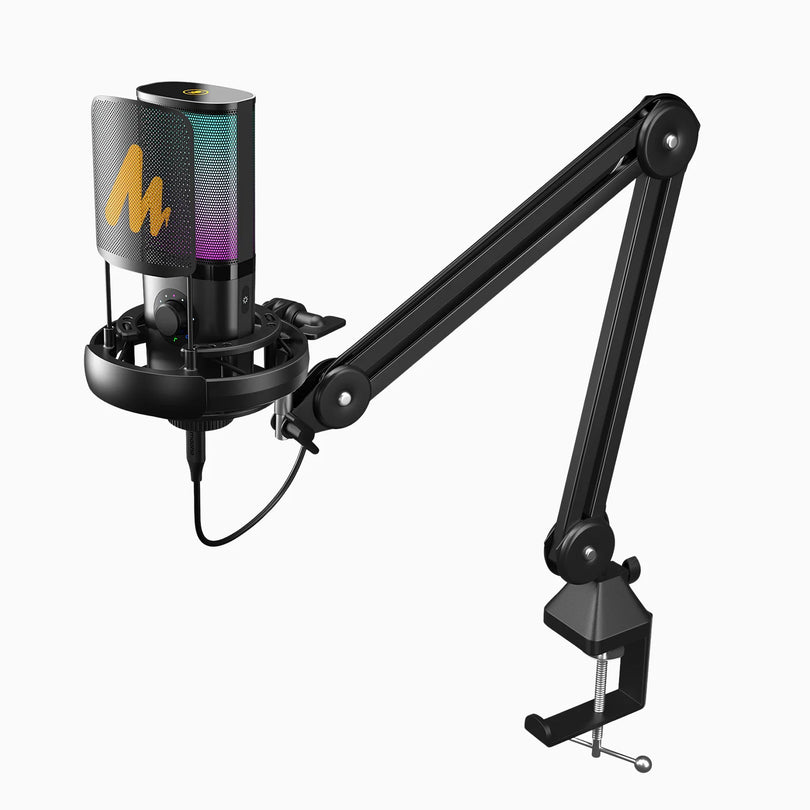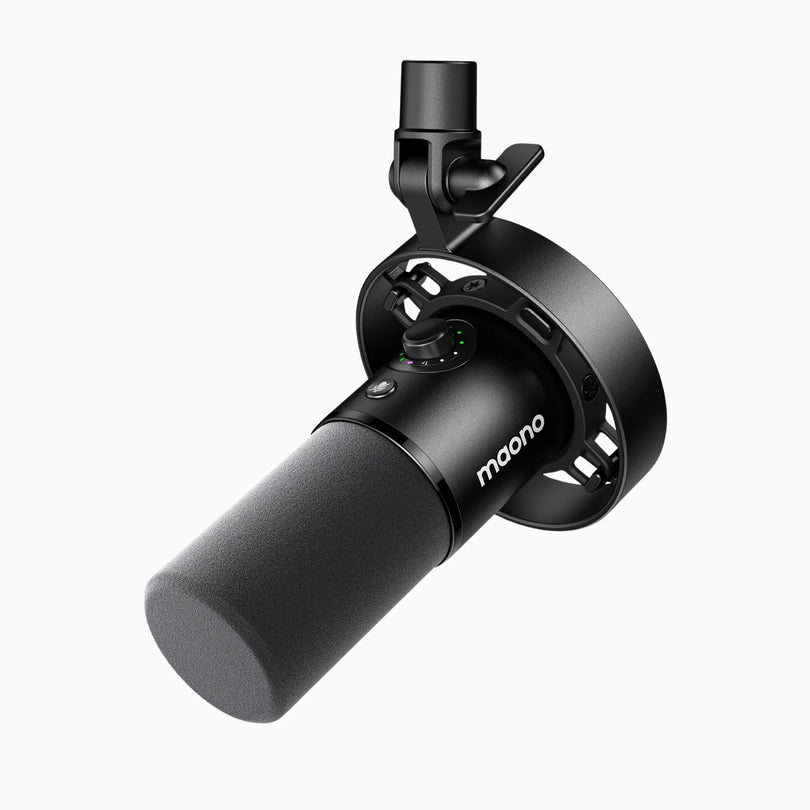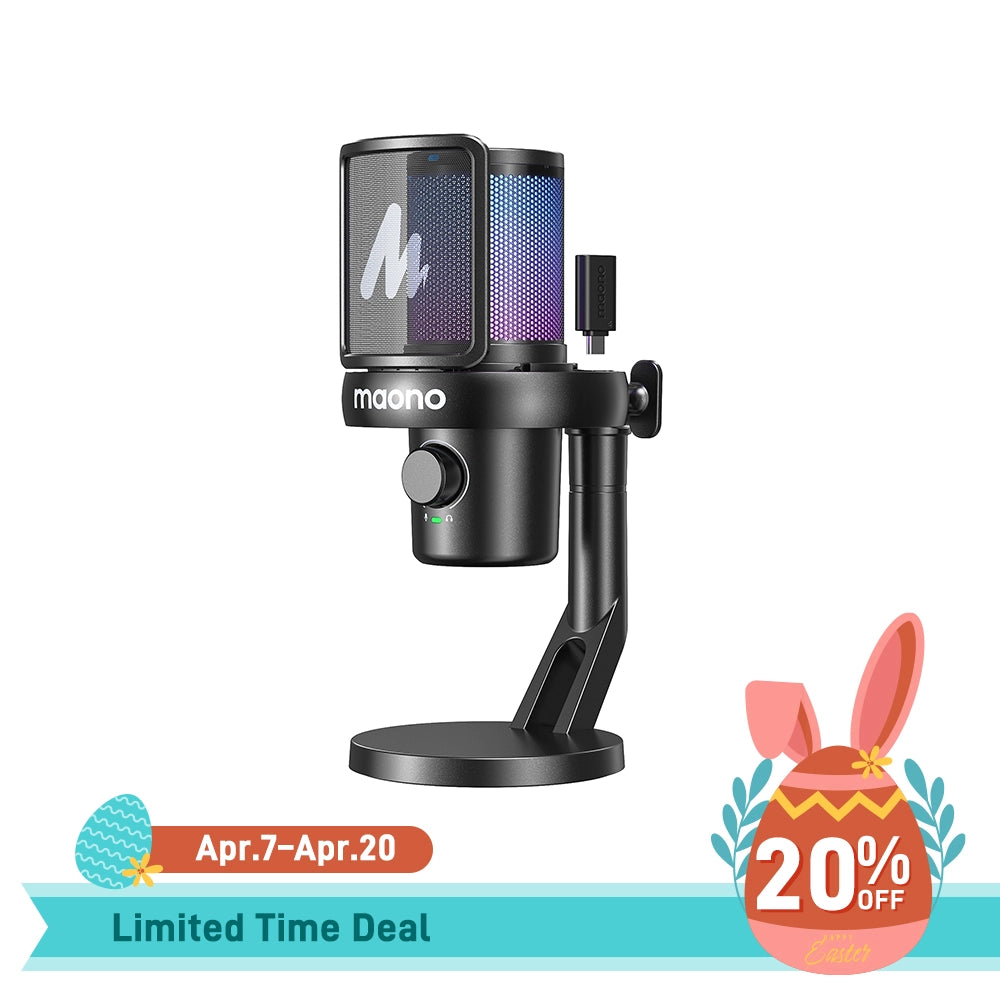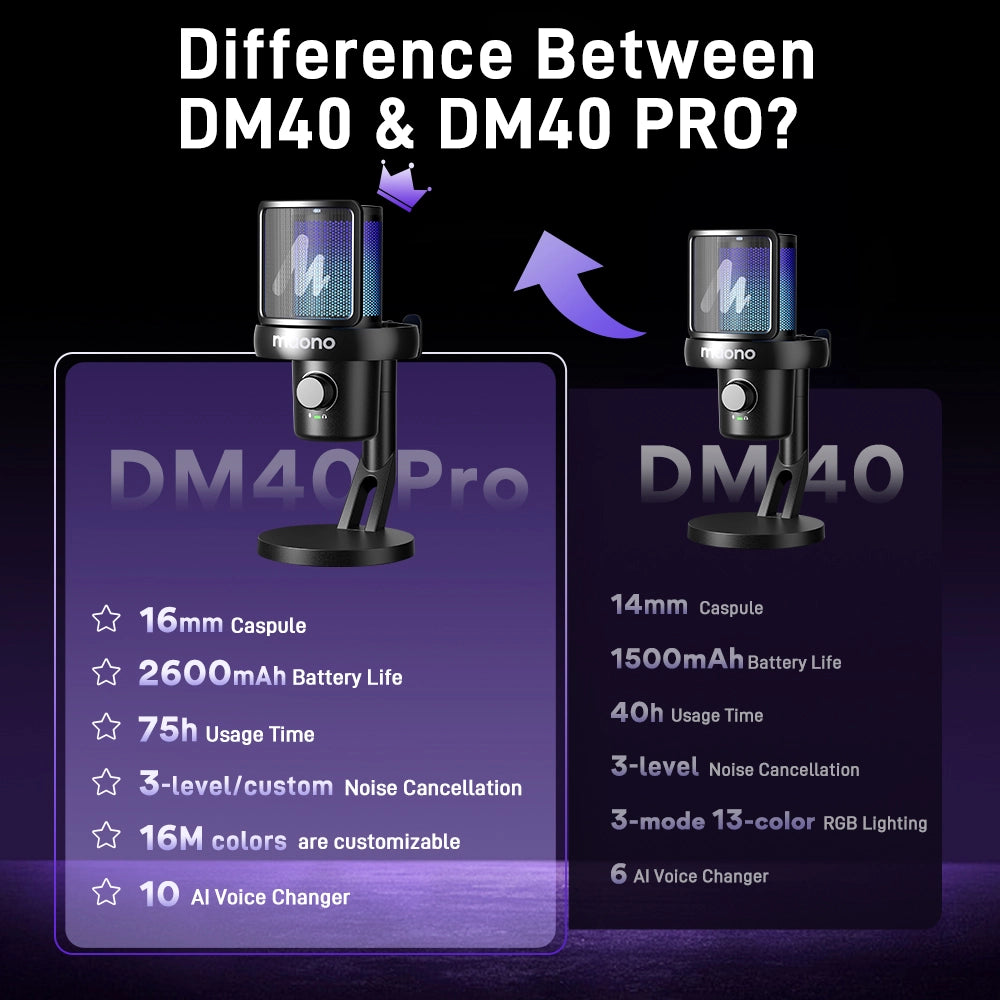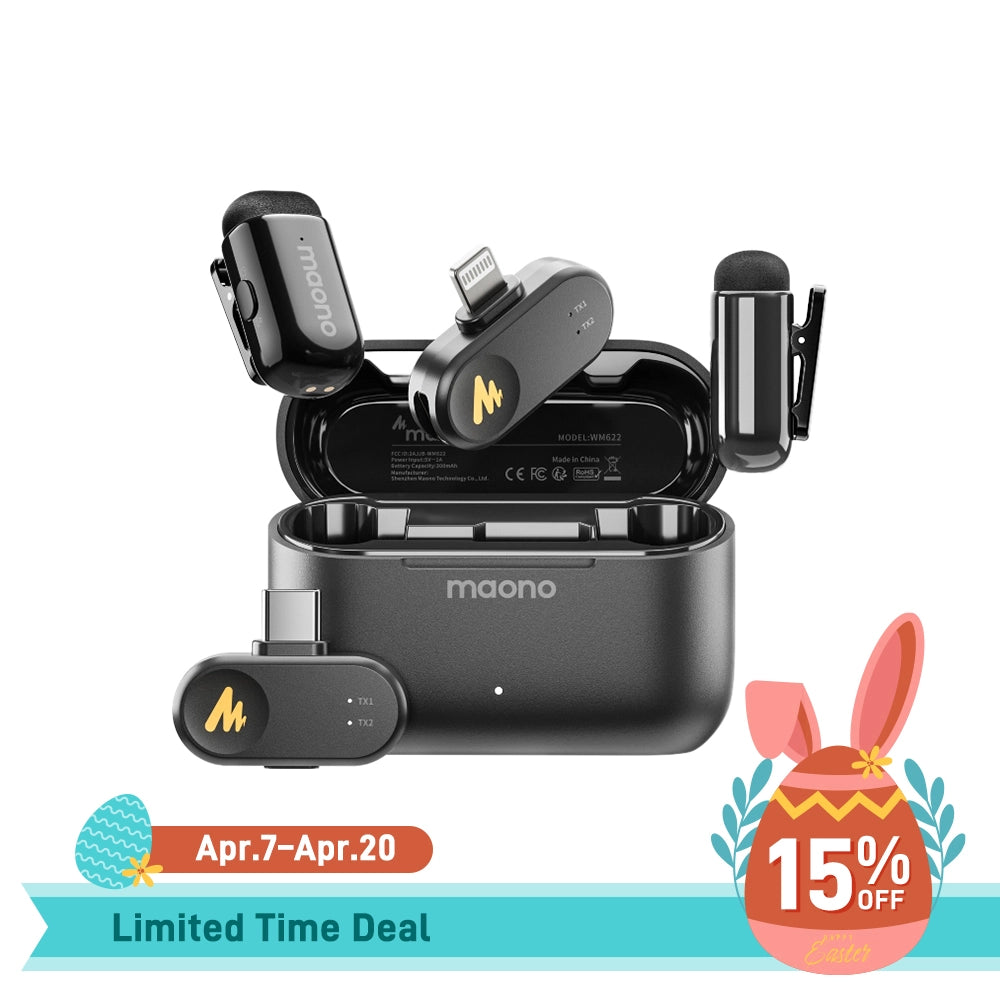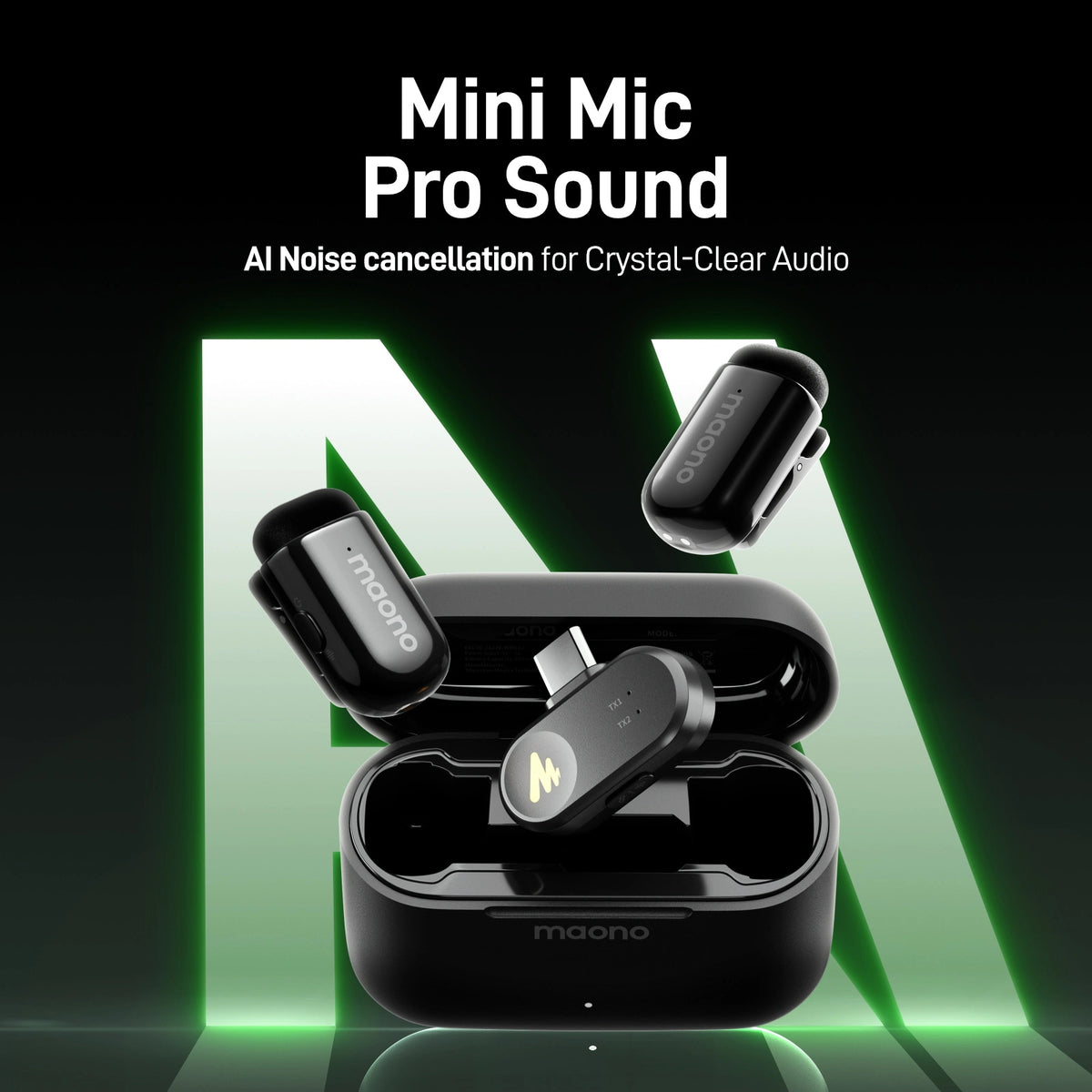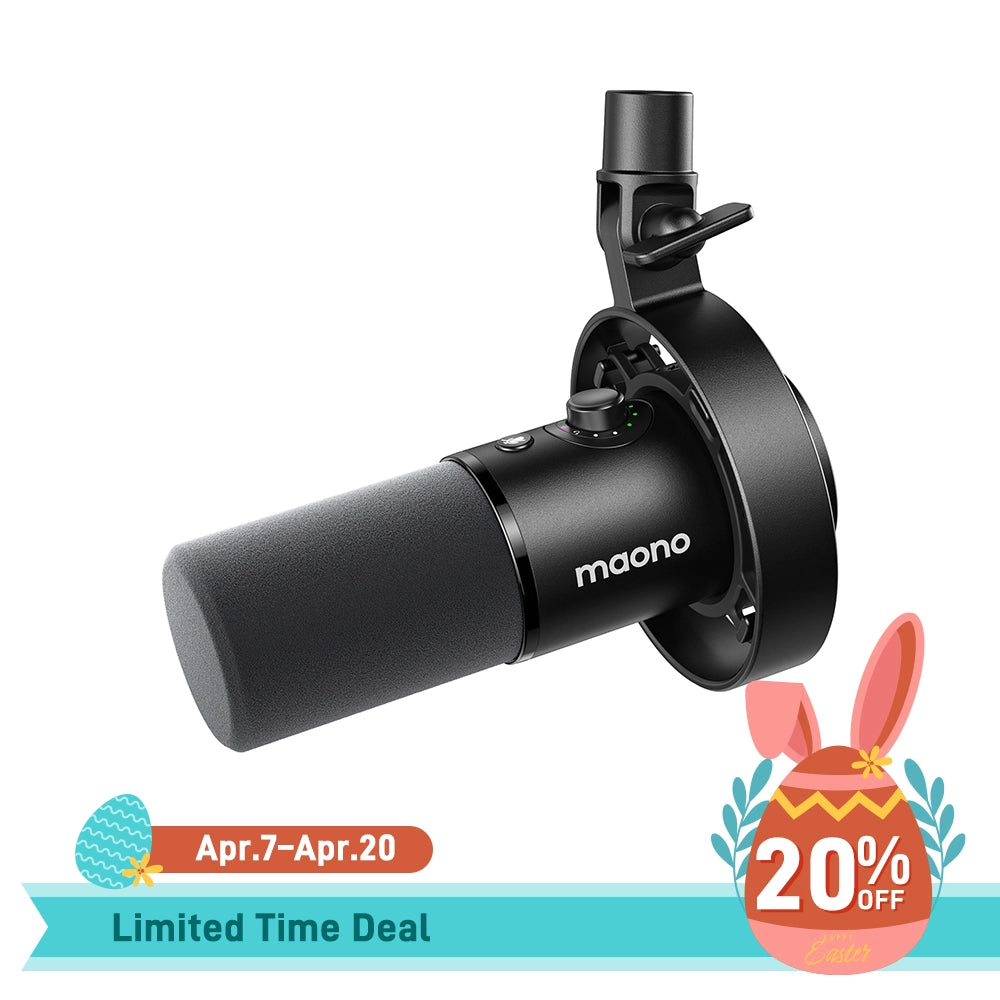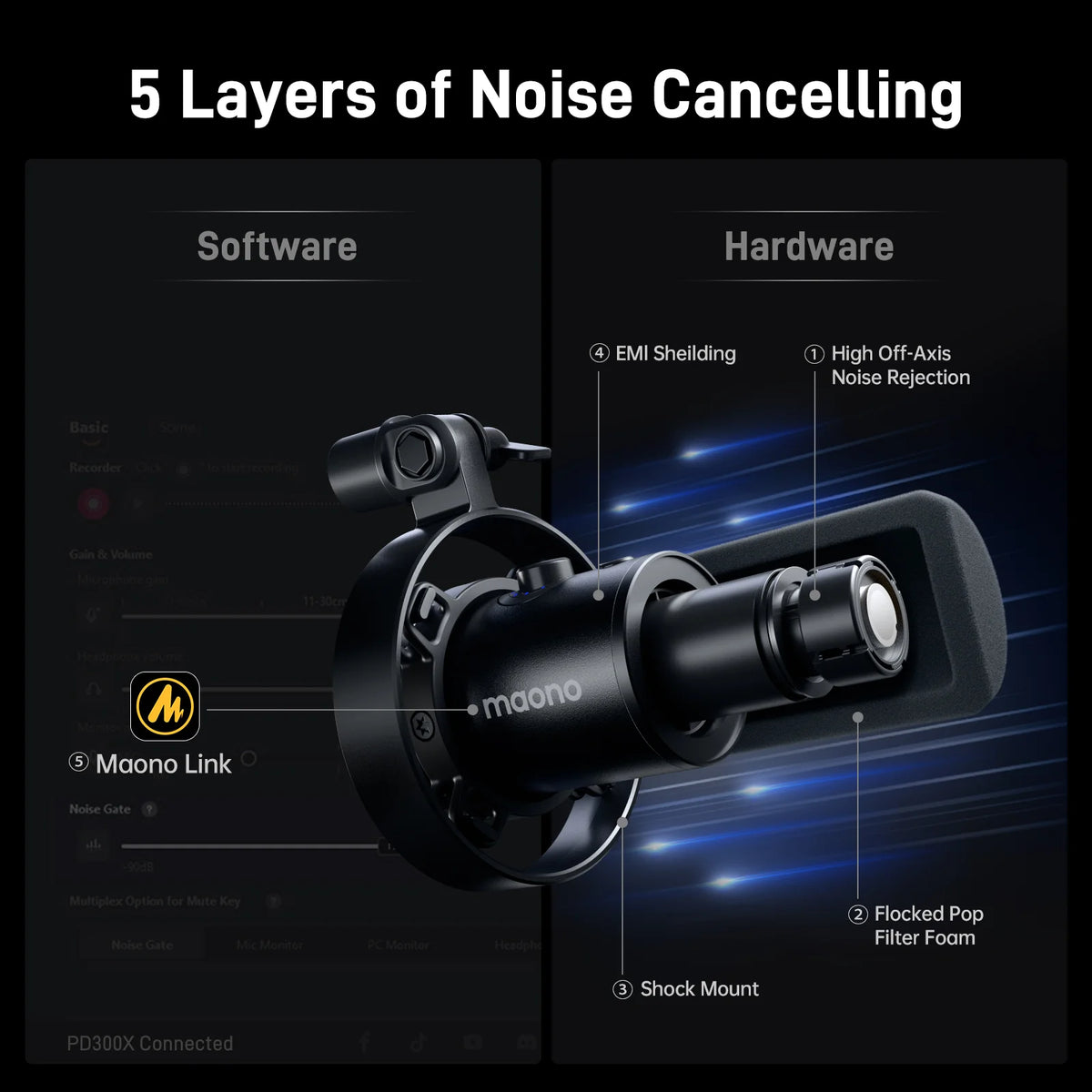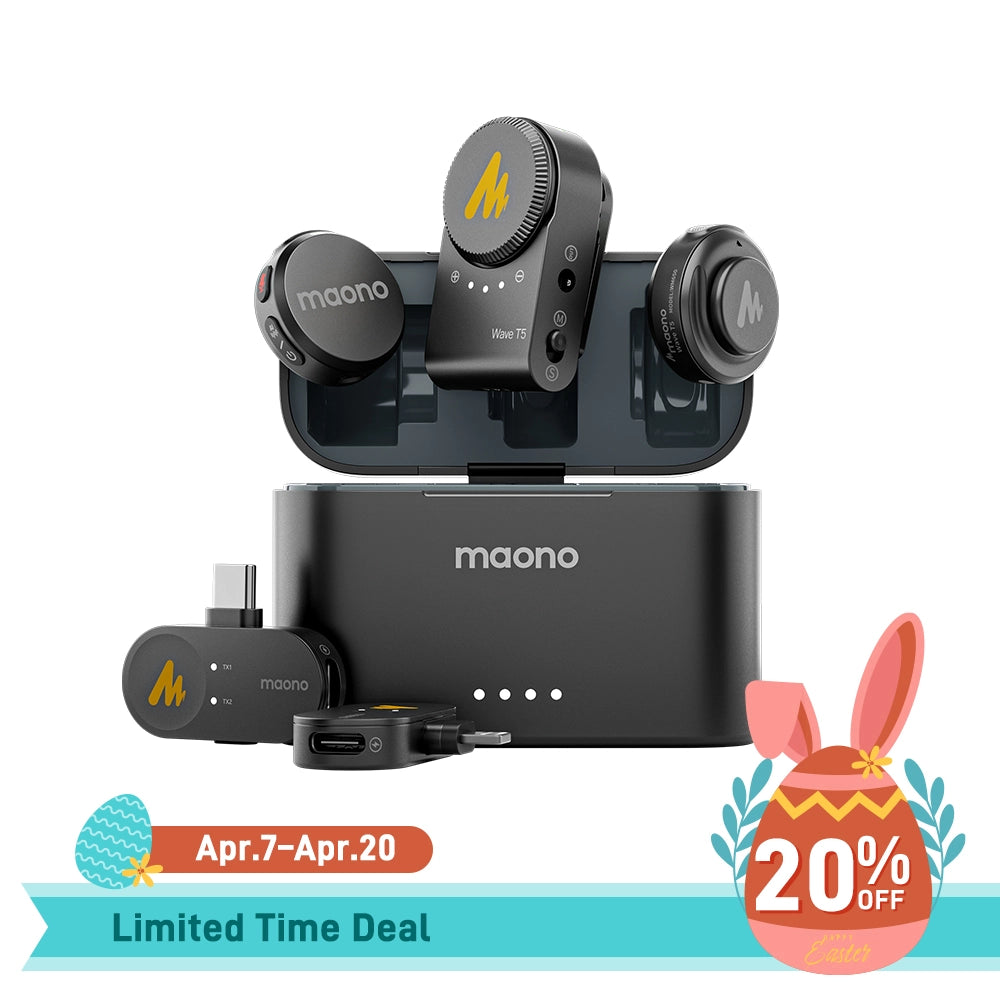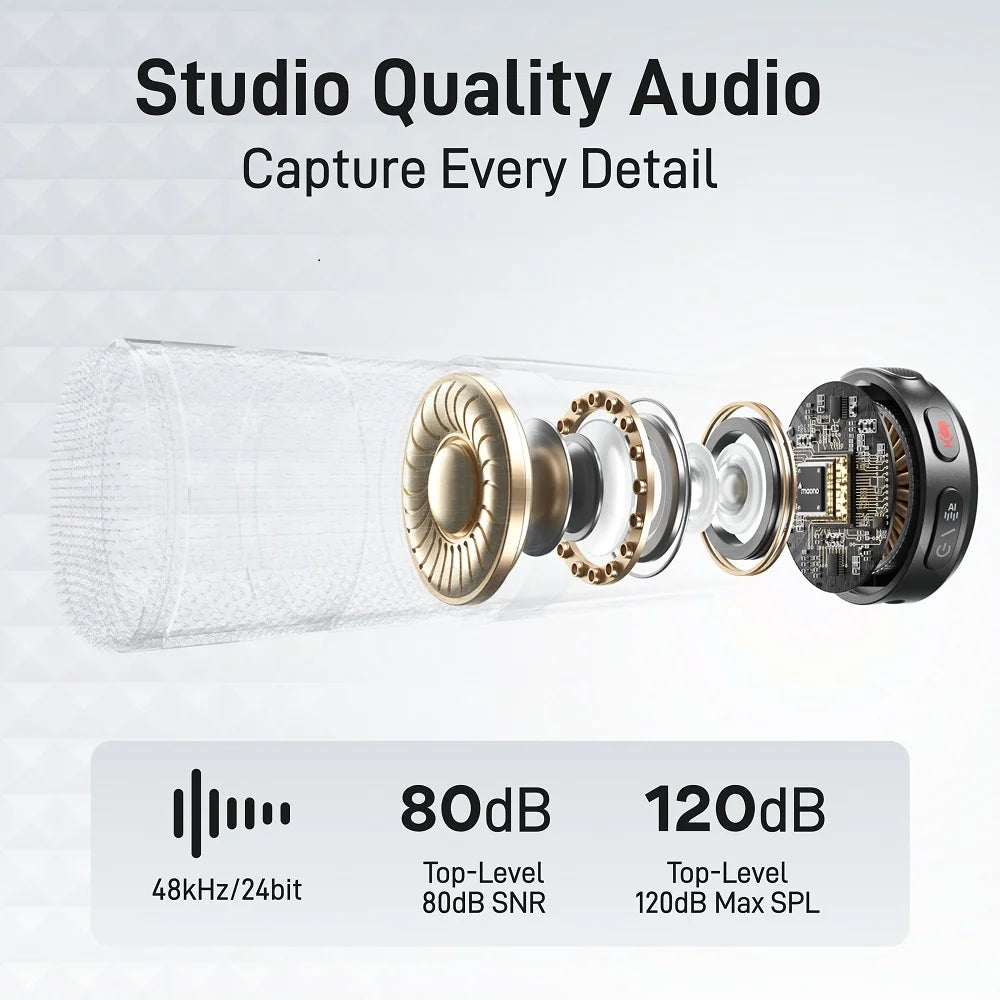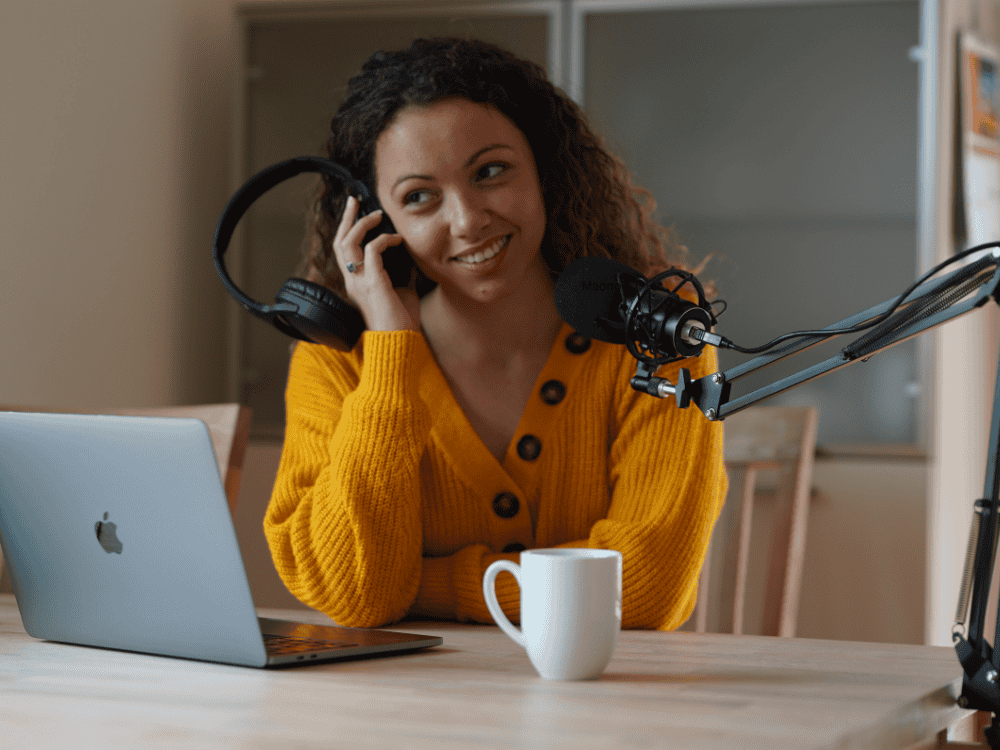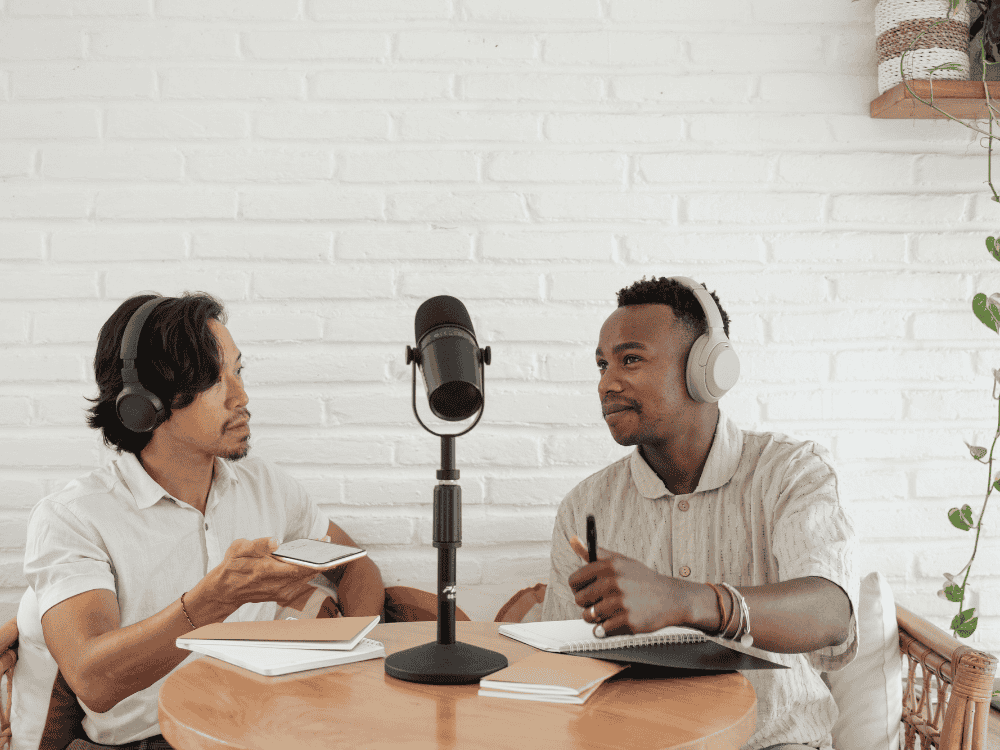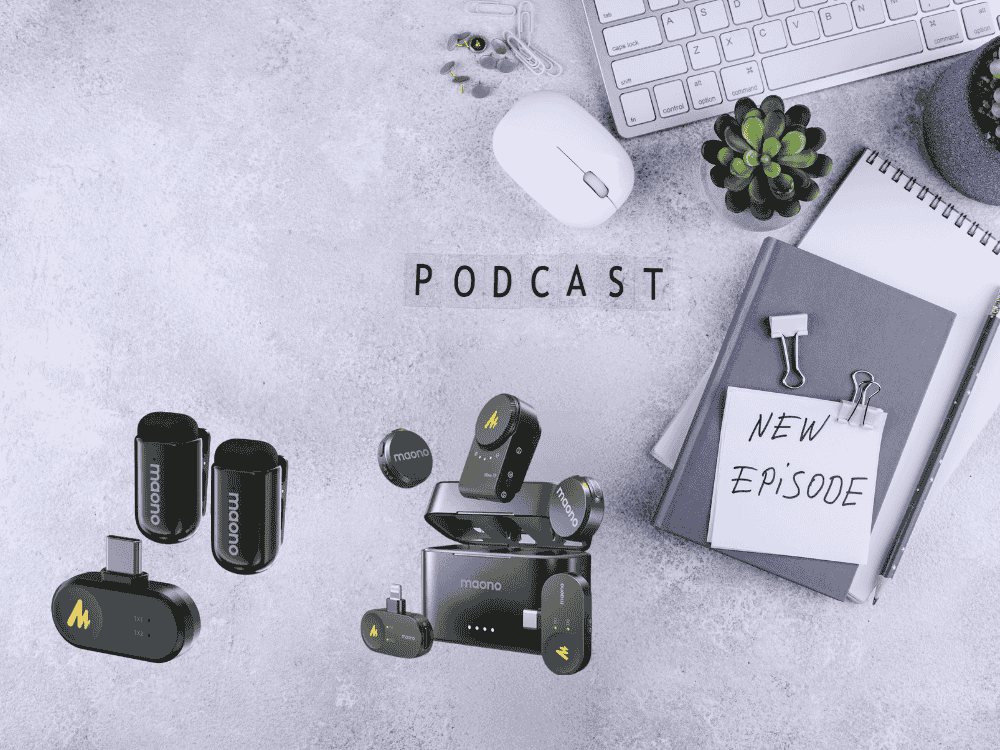The popularity of podcasting is growing, and creating high-caliber content requires having the correct tools for a successful podcast production. ToToday, we are going to discuss the essential tools and equipment for recording a podcast, specifically for 2-person podcast set ups! But before we explore the essential podcast setup for beginners, let’s take a moment to understand the basics of this profession
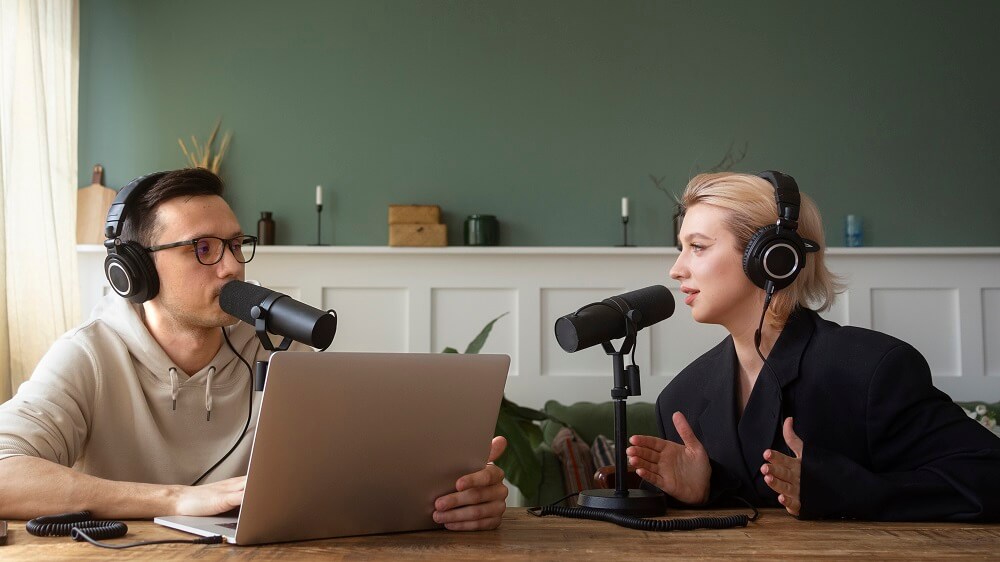
Podcasting has become an increasingly popular medium for sharing knowledge, telling stories, and engaging with audiences. Whether you're a seasoned podcaster or just starting out, having the right recording equipment is essential for recording a successful podcast because it ensures high-quality audio, reduces background noise, and enhances the overall listening experience for your audience.
In this article, we’ll cover all the must-have equipment for recording podcast, specifically for a two-person podcast setup, ensuring you have everything you need for a professional recording.
1. The Importance of a Podcasting Equipment Bundle:
A podcasting equipment bundle offers a convenient and cost-effective solution for setting up a two-person podcasting setup. These bundles typically include all the necessary tools and equipment required for recording, editing, and producing your podcast episodes. By opting for a podcasting equipment bundle, you can save time and ensure compatibility among the various components, allowing you to focus on delivering great content.
2. What a Podcasting Equipment Bundle Contains:
1) Podcast Microphones:
When it comes to selecting microphones, the type you choose can greatly impact your audio quality. A Dynamic microphones like the Maono PD400X is durable, user-friendly or easy to setup, and excellent for a hassle-free recording experience, while condenser microphones such as the RODE NT1 offers great sound clarity and detail, making them ideal equipment for recording podcasts. Here are a few top recommendations for the best podcast mic for beginners:
Maono PD400X:

The Maono PD400X features USB connectivity, allowing you to connect it directly to your computer or laptop without the need for additional audio interfaces or complicated setups. This plug-and-play functionality makes it incredibly user-friendly, perfect for beginners who want a hassle-free recording experience.
Rode NT1:

The Rode NT1 is a condenser microphone known for its exceptional audio clarity and low self-noise. It offers a wide dynamic range and captures vocals with great detail, making it ideal for podcasting and other vocal-centric applications.
Shure SM58:

The Shure SM58 is a legendary dynamic microphone renowned for its durability and reliability. It delivers warm and balanced sound reproduction, making it a popular choice for podcasters and performers alike.
2) Beginner-Friendly Podcast Set Ups' Equipment Checklist
Aside from the microphone, there are several other essential tools and equipment you'll need for a seamless two-person podcasting equipment bundle setup:
- Adjustable Scissor Arm Stand:
Adjustable scissor arm stand allows you to position your podcast microphone at the perfect height and angle.With its easy-to-use clamp, you can securely attach the stand to your desk or table, creating a professional podcasting setup.
Maono BA90 is a versatile mic stand that offers flexibility and stability. The sturdy construction ensures durability, while the adjustable design provides customizable positioning options.
- Shock Mount:
A shock mount is an essential accessory for any podcaster as it helps reduce handling noise and vibrations, resulting in cleaner audio recordings. The shock mount's easy-to-use design allows for quick and secure microphone attachment, making it a valuable addition to your podcasting toolkit.
Maono mic shock mount is designed to fit their microphones perfectly, providing optimal isolation from external disturbances. It features a durable construction that effectively absorbs shocks and vibrations, ensuring that your recordings are free from unwanted noise.
- Pop Filter:
To eliminate plosive sounds and protect your microphone from excess moisture and debris, a pop filter is a must-have accessory. The dual-layered mesh design provides excellent protection while allowing for optimal sound transmission.
Maono PF150F pop filters are meticulously crafted to effectively minimize plosive noises such as "p" and "b" sounds, ensuring clear and professional audio recordings. With its easy installation and compatibility with Maono microphones, the pop filter is an indispensable accessory for achieving broadcast-quality vocals.
- USB Cable:
High-quality USB cables that ensure reliable and stable connections between their microphones and your computer or laptop. These cables are built to withstand daily use and provide seamless data transfer for uninterrupted recording sessions. With their compatibility and durability, Maono's USB cables are essential accessories for connecting your microphone to your recording device with ease.
- Audio Interface:
An audio interface allows you to connect your microphones to your computer and ensures high-quality analog-to-digital conversion. Look for an audio interface with multiple inputs to accommodate both microphones simultaneously.
- Headphones:
Invest in a pair of closed-back headphones for each podcaster to monitor the audio during recording and editing. Closed-back headphones provide better noise isolation and prevent sound leakage, allowing you to focus on the recording without distractions.
1. Sony WH-1000XM5
The Sony WH-1000XM5 headphones feature industry-leading noise cancellation and high-resolution audio for an immersive and clear listening experience, with up to 30 hours of battery life and intuitive touch controls for convenience. Their lightweight design and comfortable ear pads make them perfect for extended use.
2. Bose QuietComfort 35 II
The Bose QuietComfort 35 II headphones offer three levels of world-class noise cancellation and balanced audio performance for any volume, with up to 20 hours of wireless listening and built-in voice assistant integration. Designed for comfort and durability, they are ideal for long listening sessions.
- Recording Device:
You need something to record your voice and save audio files. The smartphone or computer you're using to read this guide will work just fine. It likely has a built-in microphone and speaker, so you can just hit record and start talking. You can also use the Riverside feature in the Spotify for Podcasters web browser to easily remove background noise by turning on the feature.
For starters, it's totally fine if this is all you use when recording. However, you can make a few cheap upgrades to reduce echoes and improve the quality of your recordings.
- Software for Editing:
There are many affordable or even free DAWs available. For instance, Spotify for Podcasters' waveform editor is a visual tool that shows the sound waves, making it easy to find and edit loud noises or quiet moments in your recording. You can quickly cut and join your audio and publish it all from the same app.
- Acoustic Treatment:
Consider adding acoustic treatment to your recording space to reduce echo and unwanted reflections. Acoustic panels, bass traps, and diffusers can help improve the sound quality of your recordings by absorbing or diffusing sound waves.
Best Practices for Using Podcast Recording Equipment
1. Choose the Right Microphone
Type: Select a microphone suited to your recording environment. Condenser mics are great for studio setups, while dynamic mics work well in less controlled environments.
Placement: Position the microphone 6-12 inches from your mouth, slightly off-axis to reduce plosive sounds.
Pop Filter: Use a pop filter to minimize plosive sounds like "p" and "b."
2. Optimize Your Recording Environment
Quiet Space: Choose a quiet room with minimal background noise.
Acoustic Treatment: Add foam panels or blankets to reduce echoes and reverberation.
Consistent Setup: Keep your recording setup consistent to maintain audio quality across episodes.
3. Use Quality Headphones
Noise-Cancelling: Invest in noise-cancelling headphones like the Sony WH-1000XM5 or Bose QuietComfort 35 II to monitor audio without external distractions.
Real-Time Monitoring: Use headphones for real-time monitoring to catch issues during recording.
4. Utilize an Audio Interface
Purpose: An audio interface enhances sound quality by converting analog signals to digital.
Connection: Ensure the interface is compatible with your microphone and computer setup.
Settings: Adjust gain levels to prevent clipping and distortion.
5. Maintain Proper Levels
Gain Staging: Set your microphone gain levels correctly to avoid peaking.
Consistent Volume: Keep your speaking volume consistent to avoid drastic level changes in the recording.
6. Record in a Controlled Environment
Background Noise: Minimize background noise by turning off fans, air conditioners, and other noisy devices.
Interruptions: Ensure a quiet recording session by informing others of your recording schedule.
7. Monitor and Adjust in Real-Time
Headphone Monitoring: Continuously monitor your audio to catch and fix issues immediately.
Software Levels: Keep an eye on the recording software's levels to ensure they stay within a good range.
8. Edit and Enhance Post-Recording
Noise Reduction: Use noise reduction tools to clean up background noise.
EQ and Compression: Apply equalization and compression to balance the audio and enhance clarity.
Consistent Editing: Maintain a consistent editing workflow to ensure uniform quality across episodes.
9. Backup Your Recordings
Multiple Copies: Always keep multiple copies of your recordings to prevent data loss.
Cloud Storage: Use cloud storage solutions for additional backup security.
By following these best practices, you can ensure your podcast recordings are clear, professional, and consistent, providing your listeners with a high-quality audio experience.
A Comprehensive Guide to the Essential Equipment for various Types of Podcast Setups:
Here’s a comprehensive 2-minute guide to the essential equipment for various types of podcast setups:
1. Solo Podcast Setup
Microphone:
- Dynamic Microphone (e.g., PD400X, Shure SM7B, Audio-Technica AT2020) for rich, clear audio.
- Condenser Microphone (e.g., Rode NT1-A, Blue Yeti) for capturing detailed sound.
Audio Interface:
- Focusrite Scarlett 2i2 or Behringer UMC22 to connect the microphone to your computer and enhance audio quality. Practical Tip: Budget-friendly equipment and alternatives for beginners is this Two People AME2A Podcasting Equipment Bundle that is recommended for beginners and available for a reasonable price. It comes with 2 microphones and the AME2A audio interface, making it very suitable for 2-person podcasting set up.
Headphones:
- Closed-Back Headphones (e.g., Audio-Technica ATH-M50x, Sony MDR-7506) for accurate sound monitoring.
Pop Filter:
- To reduce plosive sounds and improve recording clarity.
Shock Mount:
- To minimize vibrations and handling noise, ensuring cleaner recordings.
Mic Stand:
- Boom Arm (e.g., Heil PR-40, Rode PSA1) or a Desktop Stand for optimal microphone positioning.
Software:
- Recording Software (e.g., Audacity, Adobe Audition) for recording and editing your podcast
2. Interview-Based Podcast Setup
Microphones:
- Dynamic Microphones (e.g., Maono PD400X, Shure SM7B, Rode PodMic) for each participant to capture clear and isolated audio.
Audio Interface:
- Multi-Channel Audio Interface (e.g., Maono AME2A, Zoom H6, Focusrite Scarlett 18i8) to handle multiple microphones simultaneously.
Headphones:
- Closed-Back Headphones (e.g., Beyerdynamic DT 770 Pro, Maono' MH501 or MH601 headphones) for each participant to monitor audio without bleed.
Pop Filters:
- For each microphone to maintain audio clarity and reduce plosives.
Shock Mounts:
- One for each microphone to reduce unwanted vibrations and handling noise.
Mic Stands:
- Boom Arms or Adjustable Stands for flexibility in microphone placement.
Software:
- Multi-Track Recording Software (e.g., Reaper, GarageBand) to manage and edit multiple audio tracks.
3. Roundtable Podcast Setup
Microphones:
- Omnidirectional Microphones (e.g., Audio-Technica AT2020) or Dynamic Microphones with omnidirectional settings for capturing group conversations.
Audio Interface:
- High-Quality Multi-Channel Interface (e.g., PreSonus StudioLive, Behringer X32) to accommodate multiple microphones.
Headphones:
- Closed-Back Headphones (e.g., AKG K240, Sennheiser HD280 Pro) for accurate monitoring by all participants.
Pop Filters:
- One for each microphone to ensure clean audio recording.
Shock Mounts:
- For each microphone to isolate it from vibrations and noise.
Mic Stands:
- Table Stands or Boom Arms for easy positioning around the table.
Acoustic Treatment:
- Foam Panels or Portable Isolation Booths to improve sound quality and reduce echo.
Software:
- Advanced Editing Software (e.g., Pro Tools, Audition) for detailed editing of multiple audio sources.
How to Maintain and Care for your Podcasting Gear
Now if you have already chosen the best equipment bundle for your podcasting needs, it's time to know how to take care of them so they can last long and optimize their usability.
1. Keep It Clean
Microphones: Regularly wipe your microphones with a soft, dry cloth to remove dust and debris. Use a mild disinfectant wipe occasionally, but avoid getting moisture into the microphone's openings.
Headphones: Clean ear pads and headbands with a damp cloth and mild soap. Avoid harsh chemicals that could damage the material.
2. Store Properly
Microphones: Use a sturdy, padded case or stand to protect your microphones from dust and physical damage when not in use.
Cables and Accessories: Coil cables neatly and store them in a cool, dry place to prevent tangling and damage. Avoid kinks and sharp bends in the cables.
3. Regular Checks
Connections: Inspect all connections for wear and tear. Ensure plugs and sockets are clean and free of dust to maintain a secure connection.
Batteries: If using battery-powered equipment, check battery levels regularly and replace them as needed to avoid interruptions during recordings.
4. Environmental Care
Humidity and Temperature: Store your gear in a controlled environment with moderate humidity and temperature to prevent damage from moisture or extreme conditions.
Ventilation: Ensure that your equipment has proper ventilation to avoid overheating, especially during long recording sessions.
5. Software and Firmware Updates
Update Regularly: Keep your recording software and firmware up to date to benefit from the latest features and performance improvements. Check the manufacturer’s website or software update notifications regularly.
6. Backup Your Data
Multiple Copies: Always maintain multiple copies of your recordings on different storage devices or cloud services to prevent data loss. Regularly back up your files to ensure they are safe.
7. Professional Servicing
Annual Check-Ups: Consider professional servicing or inspection of your equipment at least once a year to ensure everything is in optimal working condition. This can help identify potential issues before they become serious problems.
By incorporating these simple maintenance tips, you can extend the life of your podcasting gear, ensuring consistent performance and high-quality recordings for your podcast.
Benefits of a Podcasting Equipment Bundle:
Opting for a podcasting equipment bundle offers several advantages for a two-person podcast setup:
- Convenience and Compatibility
By choosing a podcasting equipment bundle, you can ensure that all the components are designed to work seamlessly together. This eliminates the need to research and purchase individual items separately, saving you time and effort.
- Cost-Effectiveness
Podcasting equipment bundles often provide cost savings compared to purchasing each item individually. Bundles typically offer discounted prices, making them a budget-friendly option for beginners or podcasters looking to upgrade their gear.
- Comprehensive Solution
Podcasting equipment bundles are curated to provide a comprehensive solution, including microphones, audio interfaces, headphones, stands, and accessories. With all the necessary components in one package, you can set up your two-person podcasting studio quickly and start recording right away.
How to Set Up and Use a Podcast Equipment?
Watch this Recommended video:
Where to Find the Best Podcasting Equipment Bundle:
When searching for the best podcasting equipment bundle, consider reliable and reputable audio equipment providers such as Maono.com. Maono offers a wide range of podcasting equipment bundles suitable for beginners and seasoned podcasters alike.
Click to learn more>>> Podcast Recording Equipment Checklist
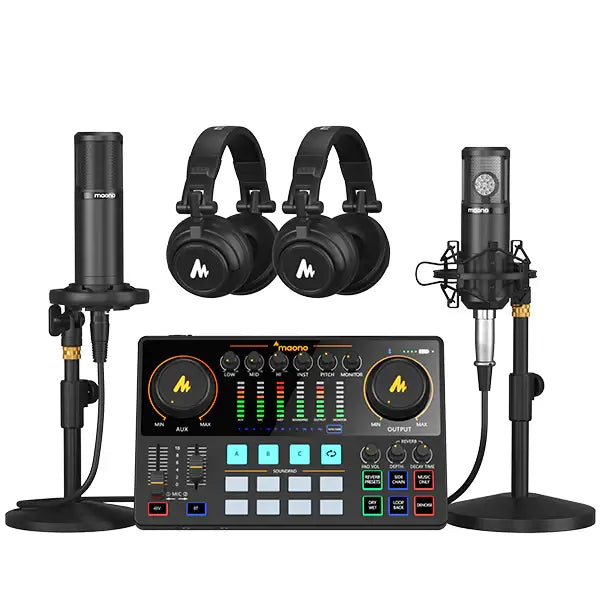
There are many other sites which offer an excellent range of products suitable to your likings. You may surf the web to find your suit apart from our recommendation.
Common Podcasting Problems for Beginners and How to Solve Them
Beginners in podcasting might encounter some minor problems. Here's a quick troubleshooting guide to solve them:
1. Poor Audio Quality
Problem: Background noise, echo, or inconsistent volume can mar your podcast’s sound.
Solution: Invest in a good quality microphone and use a pop filter to reduce noise. Record in a quiet room with minimal echo; consider using acoustic panels or blankets. Use audio editing software to adjust levels and remove unwanted noise.
2. Inconsistent Publishing Schedule
Problem: Irregular uploads can lose listeners’ interest and hinder podcast growth.
Solution: Plan your content calendar ahead of time and stick to a consistent publishing schedule. Use podcast management tools to schedule episodes in advance and stay organized.
3. Lack of Engagement
Problem: Low listener interaction can make your podcast feel disconnected.
Solution: Engage with your audience by asking for feedback, encouraging questions, and creating interactive content. Utilize social media to promote episodes and connect with listeners.
4. Technical Difficulties
Problem: Issues with recording software, microphones, or editing can disrupt the production process.
Solution: Familiarize yourself with your equipment and software before recording. Have backup solutions ready, such as spare cables or a secondary recording device. Invest time in learning basic troubleshooting techniques.
5. Content Planning Challenges
Problem: Running out of ideas or struggling with content flow can impact episode quality.
Solution: Develop a content plan with topic ideas and episode outlines. Research trends in your niche and seek inspiration from other podcasts. Maintain a list of potential guests or discussion points.
6. Monetization Struggles
Problem: Finding ways to monetize your podcast can be challenging.
Solution: Explore various monetization strategies, such as sponsorships, listener donations, or premium content. Build a strong listener base and demonstrate your podcast’s value to potential sponsors.
Our Ending Note For You:
Setting up a two-person podcasting studio requires careful consideration of the essential equipment. A podcasting equipment bundle, including the best podcast mic for beginners, offers a convenient and cost-effective solution for a seamless recording experience. By investing in high-quality microphones, audio interfaces, headphones, stands, and accessories, you can ensure professional-quality sound and capture engaging conversations.
Explore reputable audio equipment providers like Maono.com for reliable and comprehensive podcast setup for beginners. With the right tools in hand, you and your co-host can embark on an exciting podcasting journey, delivering captivating content to your audience. Check out budget-friendly options for essential podcast equipment here.



